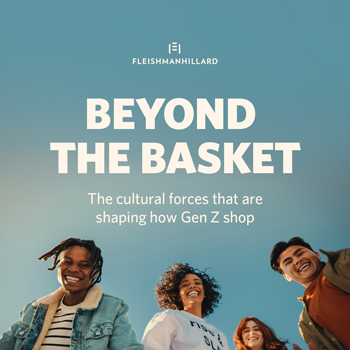Women’s Sports: why brands should act now
 Women’s Sports; a buzzword of the moment. In the world of sports partnerships, you can’t move for Women’s Sports topping trends and predictions for growth lists in 2023.
Women’s Sports; a buzzword of the moment. In the world of sports partnerships, you can’t move for Women’s Sports topping trends and predictions for growth lists in 2023.
That’s not surprising when we look at the women’s sports calendar this year, from the Women’s Six Nations kicking off at the end of the month to the Ashes in June. We have the Tour de France Femme in July, the Netball World Cup in South Africa, and the Women’s Football World Cup in Australia. That’s even before we mention the mixed sports where we get to see sportswomen shine; Tennis Opens, Hockey Championships and the Diamond League events, to name a few.
The opportunities for fans to see women’s sports this year are vast. And in tandem, the opportunities for brands to activate in and around women’s sporting events are enormous. So, what should brands know about investing in one of the year’s hottest opportunities?
Investing in Women’s sports makes complete business sense
Sports partnerships are business deals. Therefore, ensuring optimum ROI on your investment is critical to a successful partnership.
Women’s sport is gaining fans at an exponential rate, and younger fans at that, thus offering opportunities for long-term brand affinity and engagement; a survey from YouGov found that 44 per cent of global sports fans aged 18 to 24 preferred watching women’s sports over men’s, compared to only 16 per cent among the 55-plus age group. Not to mention, the return is excellent.
Women’s sports in the UK could also generate £1 billion in revenue a year by 2030, up from £350 million in 2021, according to the Women’s Sport Trust and Two Circles.
Women’s sports give brands more opportunity
According to a study by The Sports Consultancy (TSC) and BDO, men’s sports, by comparison to women’s, is congested with too many investors competing with each other for ROI, as well as a lack of space in the calendar for new competitions or formats. Strong incumbent rights holders can also resist disruption from new entrants, making it challenging to optimise men’s sports partnerships if you’re a newcomer.
The study also highlights that women’s sports are likely to be free of complex commercial structures that are commonplace in men’s sports and limit investment growth. Therefore, the opportunity to be flexible and achieve exactly what your brand needs is far greater in women’s sports.
Women’s sports aren’t for gender-specific brands; they’re for all brands
Women’s sports offer some of the most diverse and equitable fan followings; a Nielsen survey found that 84% of sports fans are interested in women’s sports. Of those, 51% are male, confirming that women’s sports engage a gender-balanced audience. Not to mention, the culture around women’s sports is more inclusive.
Inclusivity goes beyond gender, from top professional athletes being open about their sexuality to others being vocal allies for LGBTQ+ communities. With sporting idols being so open around such social issues, it, in turn, creates a more inclusive fan environment. Therefore, the potential for your brand to reach a more diverse audience is arguably far greater with women’s sports than with men’s.
You’d better act fast
Sponsors are cottoning onto the brilliant ROI that women’s sports offer.
A study by Nielsen found that unbundled women’s sponsorship investment across three of sport’s biggest rights holders – FIFA, UEFA and World Rugby – rose by 146 per cent in 2021. What with the UK Government’s confirmation of a £600M investment into grassroots girls’ sports today, the only way is up for women’s sports.
So, what are you waiting for? Time to stop reading this and get in touch for further women’s sports partnership advice before you miss out.
Sinead McGeever, UK Sports Campaigns and Sponsorships Lead
Find Out More
-
Achieving Outsized Impact by Building Stronger Country Reputation
February 18, 2025


